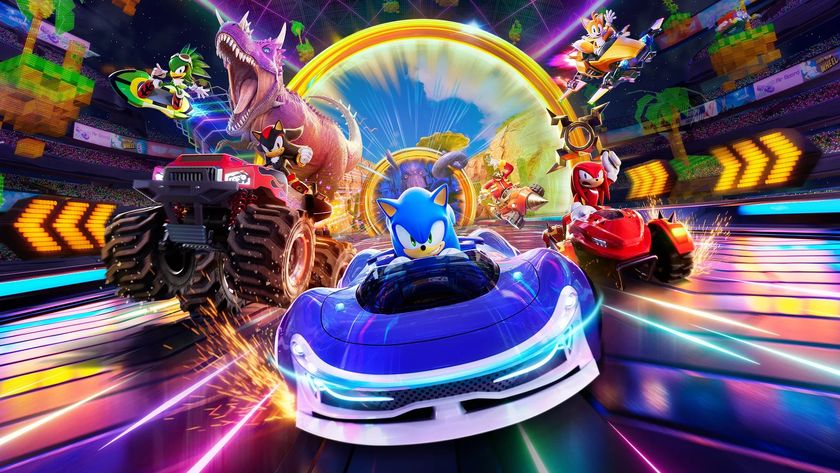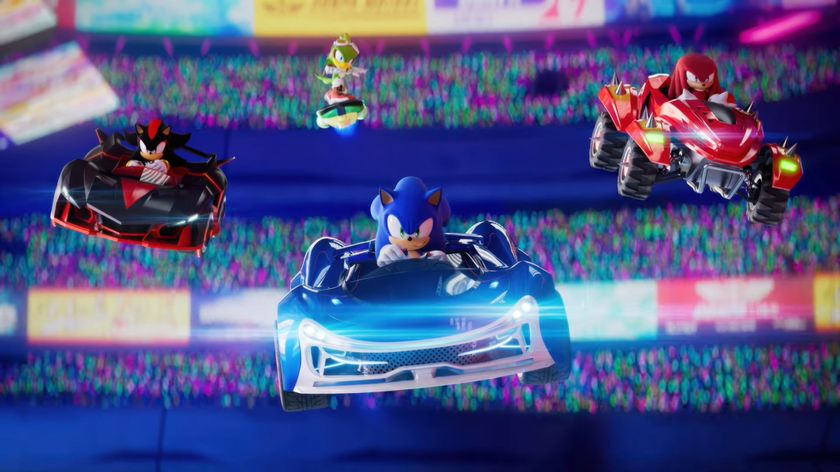Sonic Mania makes a clear distinction between Special and Bonus stages: one's fun, the other is far from it
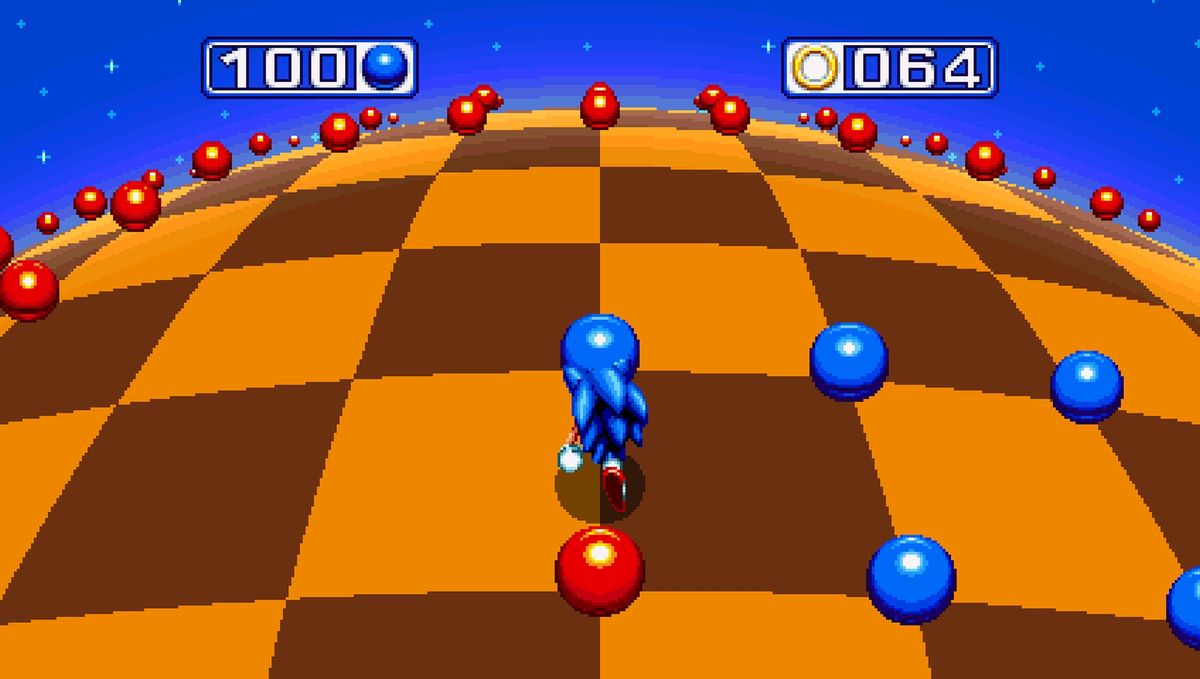
You don't have to be a devout Sonic apologist to be stoked for Sonic Mania, the forthcoming return to 2D glory for Sega's iconic blue hedgehog. This pixel-perfect homage to the Genesis/Mega Drive games that made Sonic a star is the perfect blend of retro and reinvention, capturing the precise, borderline magical, feel of the running and jumping from the original games while weaving in all kinds of ingenious new stage mechanics and level design. Now, this being a Sonic game, you know there are going to be hidden Chaos Emeralds to collect - and, in series tradition, they've all been tucked away inside Special Stages. Sonic Mania actually includes two distinct callbacks to the Special Stages of old - but unfortunately, they're polar opposites when it comes to fun factor.
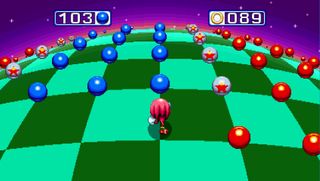
Let's get the bad news out of the way first: the quasi-3D Special Stages from Sonic 3 & Knuckles are back, and they're not better than ever. Sonic Mania classifies these as Bonus Stages, or 'Blue Spheres' - a reference to the core mechanic that has Sonic snagging all the floating blue orbs that dot the horizon of these spherical, wrap-around pocket dimensions. The problem with these Bonus Stages is immediately apparent: the finicky controls, which are a little too faithful to the originals. Nudging Sonic (or Tails, or Knuckles) left and right causes the entire perspective to make a hard 90 degree turn, and the constantly shifting viewpoint is downright nauseating. Problem is, you're going to need to turn on a dime extremely often if you want to clear these stages successfully, because every blue sphere turns red once you've touched it - and as you probably guessed, making contact with a red orb results in instant failure.
To make matters even more frustrating, orbs are positioned in ways that often turn the slightest screw-up or miscalculation into guaranteed death. Once you've formed a closed loop of orbs, all the orbs contained in your path turn to rings, which you'll need to pick up if you want a perfect score and the Gold Medallion it bestows (no word on what those actually do just yet). To convolute things even further, you can also jump - which you'll need to do (while silently praying for survival) whenever you've trapped yourself in a minefield of red orbs. Worst of all, you have no way of quickly retrying a Bonus Stage should you fail, as their portals only spawn above checkpoints when you first make contact.
Long story short, the Bonus Stages suffer from the worst flaws of many platformer's bonus bits: instead of testing your mastery over the core game mechanics, they saddle you with an unfamiliar, uncomfortable control scheme in the name of gimmicky presentation. Fortunately, you likely won't need any Gold Medallions (or the Silver Medallions you get for simply completing a Bonus Stage) to score Sonic Mania's assortment of Chaos Emeralds, which will no doubt be a prerequisite for the best ending. Those are found in the Special Stages, which are infinitely more enjoyable than their Bonus cousins.
Sonic the UFO catcher
You access Special Stages by seeking out giant polygonal rings hidden within each level. Jump in, and you'll be transported to another dimension with a third-person perspective that's nearly identical to the Special Stages of Sonic CD, albeit starring a polygonal 3D Sonic straight out of the Sega Saturn's Sonic 3D Blast (or, dare I say, the super sonic racing of Sonic R on Sega CD). As in Sonic CD, you'll see a hovering UFO in the distance - but for Sonic Mania, it's all alone rather than one of many, clearly carrying a Chaos Emerald in its robotic arm. These Special Stages are essentially a race on a closed track with multiple laps: Sonic must collect blue orbs to up his speed (as represented by a handy Machmeter) and snatch up rings to extend his time. Either you'll gain enough speed to catch the UFO, or you'll run out of time and get kicked from the Special Stage, free to retry it by simply hopping in for another go.
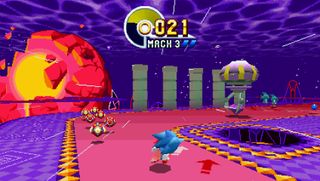
By contrast to the lackluster-at-best, vomit-inducing-at-worst Bonus Stages, the Special Stages fully deliver on the Sonic fantasy: running really, really fast. Though the perspective and controls are roughly the same as the Bonus Stages, the objective is so much clearer, and the miniature, self-contained levels are designed to be mastered as you would a Mario Kart (make that Sonic & Sega All-Stars Racing) track, looking for shortcuts and avoiding obstacles with hairpin turns and short hops. The Special Stages are a delight when you succeed and an enticing challenge when you fail, perfectly complementing the joyous vibe of Sonic Mania as a whole.
Another welcome addition is the Time Attack mode, the aspiring speedrunner's best way to test their time trial mettle. Once you've completed a stage in the regular game, it'll unlock in Time Attack, which plops an adorable gate doohickey at the beginning and end of the level. Pass through, and you'll start a timer that'll end up on an online leaderboard (though sadly, there are currently no plans for a replay function to let you study the top times). The best part is, should you take a wrong turn or flub a spin dash, you can restart your run in the blink of an eye: simply hold Y/Triangle, and you'll be whisked back to the starting line, no menu visits necessary. It's amazing how many headaches this simple function can save when you're restarting your run 20 (or 200) times in the pursuit of perfection.
Sign up to the 12DOVE Newsletter
Weekly digests, tales from the communities you love, and more
All in all, two out of three additions to the core gameplay of Sonic Mania ain't bad - and if the Bonus Stages aren't necessary for anything other than personal achievement, I'll happily skip them. But you best believe I'll be chasing after all those Chaos Emeralds when Sonic Mania launches on PS4, Xbox One, Switch, and PC on August 15, 2017.
Lucas Sullivan is the former US Managing Editor of 12DOVE. Lucas spent seven years working for GR, starting as an Associate Editor in 2012 before climbing the ranks. He left us in 2019 to pursue a career path on the other side of the fence, joining 2K Games as a Global Content Manager. Lucas doesn't get to write about games like Borderlands and Mafia anymore, but he does get to help make and market them.
Most Popular





